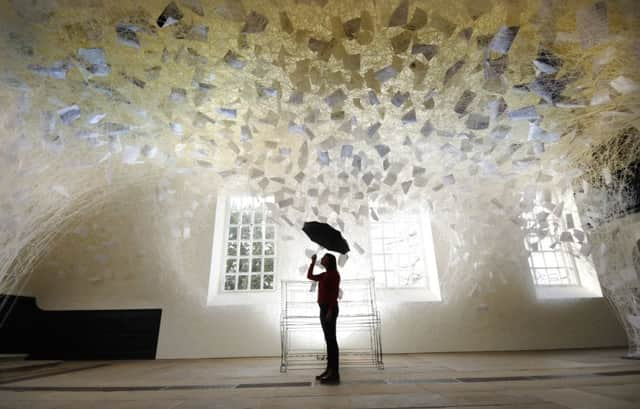500 acres in former Wakefield mining region named among locations that define England's art landscape


The Yorkshire Sculpture Park, on the site of the former Bretton Hall College, is listed alongside Chatsworth and St Paul’s Cathedral among the country’s defining art, architecture and sculpture landmarks.
The list has been compiled as part of a project to tell England’s story in 100 places, divided into 10 categories.
Advertisement
Hide AdAdvertisement
Hide AdIronically, it also includes a museum dedicated to the sculptor Barbara Hepworth, who was born near the Sculpture Park and who has a gallery named after her in Wakefield.
But the Barbara Hepworth Museum and Sculpture Garden, chosen from a longer list of public nominations, is in St Ives, Cornwall, where she spent much of her life.
Will Gompertz, the BBC Arts Editor, who picked the top 10, said he had selected the Sculpture Park because it was “a fabulous tribute to the English countryside that marries the ancient with the modern”.
He said: “Sculptors from Henry Moore to Auguste Rodin have shown their work in their splendid gardens. It is, without doubt, one of the finest examples of art in the landscape anywhere in the world.”
Advertisement
Hide AdAdvertisement
Hide AdThe park was founded in 1977 when Peter Murray, a lecturer at Bretton Park College, proposed placing sculptures in the grounds and opening the land to the public for the first time.
The college had opened in 1949, with just 56 pupils, and eventually became part of Leeds University. Its alumni include the actor and screenwriter Collin Welland, the writer Kay Mellor and the actor-comedians Mark Gatiss, Steve Pemberton and Reece Shearsmith. The college closed in 2007, but the future of the Sculpture Park was secured when Wakefield Council bought the Bretton Park Estate.
The region’s other entry on the list is the Chatsworth Estate, near Bakewell, one of the grandest country houses in England. It contains works of art that span 4,000 years, including masterpieces by Rembrandt, and its grounds are used by its owners, the Duke and Duchess of Devonshire, as the setting for contemporary works.
Mr Gompertz said: “Chatsworth is perhaps the finest example of the English stately home. But it is still a living home with an energetic owner who makes sure that this historic building is still very much alive in the 21st century.”
Advertisement
Hide AdAdvertisement
Hide AdAmong the more unusual entries on the list is the small Minack open-air theatre in Cornwall, constructed in the 1930s on an outcrop jutting into the sea.
Mr Gompertz said: “If Shakespeare were alive today I think he’d make a beeline for this rocky outpost and write new plays for today.”
Duncan Wilson, chief executive of Historic England, said: “These 10 choices represent the huge range of our most precious places, all of them special and significant around the world.
“They are symbols of great cultural and artistic achievement, from cathedrals and great houses to iconic sculptures, a theatre in a stunning natural setting and one of the greatest galleries of modern art in the world created in an abandoned power station. These places all have a strong identity, and bring people together. They fully deserve to be celebrated.”